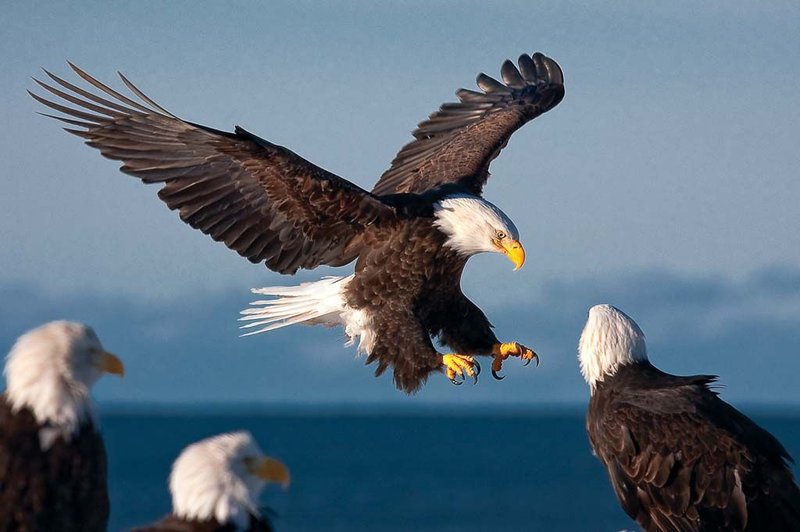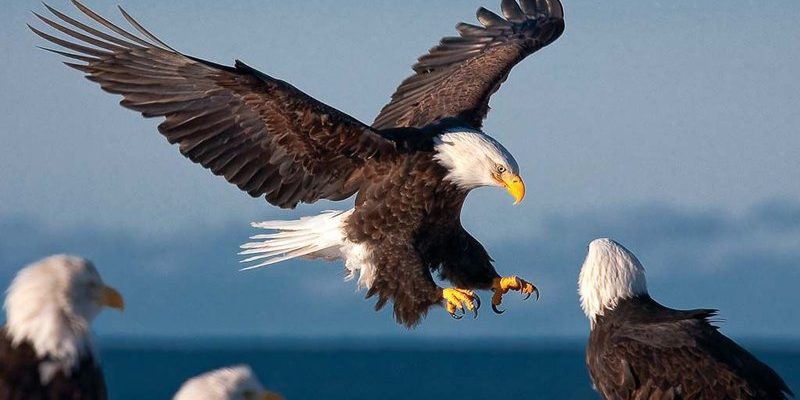
To kick things off, let’s clarify what we mean by “threatened” and “endangered.” These terms describe the levels of risk a species faces to its survival. While “endangered” refers to a species that is in immediate danger of extinction, “threatened” means the species is likely to become endangered in the near future. Understanding where the bald eagle stands on this spectrum helps us see where our conservation efforts are focused and how successful they have been.
The History of the Bald Eagle’s Population
Bald eagles once faced a dark chapter in their story. Back in the mid-20th century, their numbers plummeted due to habitat loss, hunting, and the notorious pesticide DDT, which had devastating effects on their reproduction. You could say that it was a tough time to be a bald eagle—kind of like being a star athlete sidelined by injury.
But there’s a silver lining! Thanks to concerted conservation efforts, the situation for bald eagles has improved significantly. Habitat protection and the banning of DDT in the 1970s were game-changers. By the 2000s, sightings of bald eagles became more common, and advocates for wildlife began celebrating their recovery.
Current Population Status
Today, the bald eagle is classified as “least concern” by the International Union for Conservation of Nature (IUCN). That doesn’t mean they’re out of the woods entirely, though. According to recent estimates, there are about 316,000 bald eagles in the United States. It’s impressive, but it’s essential to remember that there are still challenges ahead.
Local populations can vary significantly across states. For instance, in Florida, you’ll find a robust community of bald eagles thanks to the state’s abundant waterways. Meanwhile, other areas face habitat challenges that could threaten future generations. You might be thinking, “So, what keeps these majestic birds safe?” Let’s dive into the ongoing challenges and conservation efforts.
Challenges Facing Bald Eagles
Despite the progress made, bald eagles are not entirely out of danger. Habitat degradation is one of the biggest threats they face today. As cities expand and agriculture encroaches on natural lands, the places where these birds hunt and nest are disappearing. It’s like tearing down the neighborhood diner where everyone gathers—there’s simply nowhere for them to go.
In addition to habitat loss, bald eagles also face risks from pollution and climate change. Chemicals can accumulate in their food sources, leading to harmful effects on their health and reproductive capabilities. Climate change can disrupt their migratory patterns, making it harder for them to find adequate food and suitable nesting sites.
Human Interactions and Disturbances
Human activities can create additional disturbances as well. Think about the hustle and bustle of boats and other recreational activities near lakes and rivers. These noises and movements can interfere with nesting and hunting. Bald eagles are particularly sensitive during the breeding season, and disturbances can lead to abandoned nests, impacting population growth.
It’s clear that while efforts have been made to protect the bald eagle, they still need our attention and care. So, what’s being done to help them thrive?
Conservation Efforts for Bald Eagles
Thanks to the Endangered Species Act, bald eagles have benefited from a variety of protections. This legislation has played a crucial role in safeguarding their habitats and ensuring they can rebuild their populations. Consider it a safety net, allowing these birds to spread their wings without constantly looking over their shoulders.
Numerous organizations and groups work tirelessly to promote awareness and conservation. Many states have established protective measures, including laws against disturbing nests and hunting. Local wildlife refuges also create safe havens where eagles can thrive without threats from human activities.
Public education is another key tool. By informing people about the importance of preserving natural habitats, we help create a culture that values wildlife. You might even think of it as enlisting an army of eagle fans who advocate for their protection.
The Role of Technology in Conservation
Technology is also playing an exciting role in conservation. Biologists use tracking devices to monitor bald eagle movements and nesting habits, allowing them to identify which areas need protection the most. This data-driven approach helps allocate resources effectively. Imagine a treasure map showing where the most vital eagle habitats are located!
Innovations in wildlife conservation can foster a deeper understanding of these birds’ needs and behaviors, making it easier to protect them. The collaboration between scientists, conservationists, and the public helps ensure that bald eagles continue to thrive in the wild.
What You Can Do to Help
If you’re feeling inspired to take part in bald eagle conservation, there are several ways you can help. First, consider supporting local wildlife organizations that focus on habitat protection and education. Your contribution, no matter how small, can make a difference in their efforts.
You can also become an eagle advocate by promoting awareness. Share what you’ve learned with your friends and family. The more people know about the challenges bald eagles face, the more support they’ll receive.
Engaging in responsible outdoor activities is crucial too. If you’re near eagle habitats, keep a respectful distance. Avoid disturbing their nests, especially during the breeding season. It’s a bit like being a respectful guest in someone’s home—keeping the peace is essential.
Celebrate the Bald Eagle
Finally, celebrating the bald eagle can be a fun way to show support. Many communities host eagle-watching events or educational programs—these are excellent opportunities to learn more about these magnificent birds and encourage others to appreciate them as well.
In summary, while the bald eagle is no longer classified as endangered, it still faces challenges. However, through ongoing conservation efforts and public support, there’s a promising future ahead. Together, we can ensure that the skies remain filled with the incredible sight of this majestic bird, a true icon of freedom and resilience.

